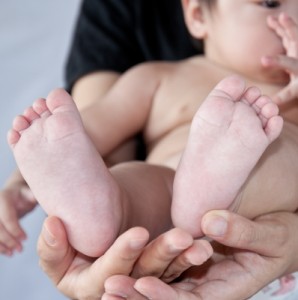Home >> My Pregnancy, Pregnancy Symptoms >> SPD and labour
SPD and labour
SPD (Symphysis Pubis Dysfunction) or PPGP (Pregnancy-related Pelvic Girdle Pain) is severe pelvic pain which results from excess levels of relaxin softening your pelvic ligaments in preparation for labour and childbirth.
Suffering from SPD can make childbirth a little more challenging, but the majority of mothers with SPD are still able to experience normal, natural vaginal births. It is only a few rare cases which make a C-section the only safe option.
A waterbirth is a good option to consider, because the water releases the pressure off of your pelvis. If not, lying on your side during stage 2 of labour and delivery can be a more comfortable birthing position than the traditional on your back, legs open position.
Tips for labour:
- Make sure your birth plan is adapted to your SPD needs and that everyone involved (doctor, nurse, midwife…) knows that you have SPD.
- Know your pain-free range of motion.
- Arrange a postpartum appointment with your physiotherapist in order to evaluate the effect labour and birth has had on your body and what treatment you will have to undergo.
Tags: labour and birth, pelvic pain, pregnancy, pregnancy hormones, pregnancy symptoms, pregnant, relaxing, SPD, SPD and labour
Related post

SPD (symphysis pubis dysfunction)
SPD (Symphysis Pubis Dysfunction) or PPGP (Pregnancy-related Pelvic Girdle Pain) is severe pelvic pain which results from excess levels of relaxin softening your pelvic ligaments in preparation for labour and childbirth. Pelvic pain is normal during pregnancy, however, SPD is a severe case which can make daily activities challenging. It usually begins anytime between the […]
Read more...